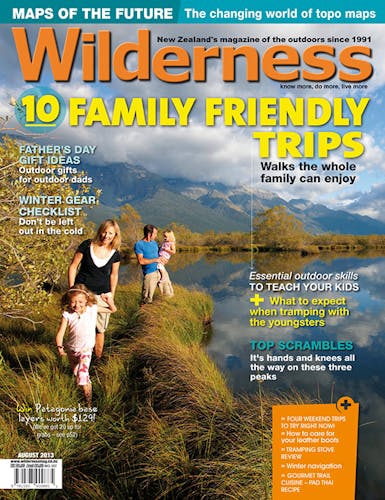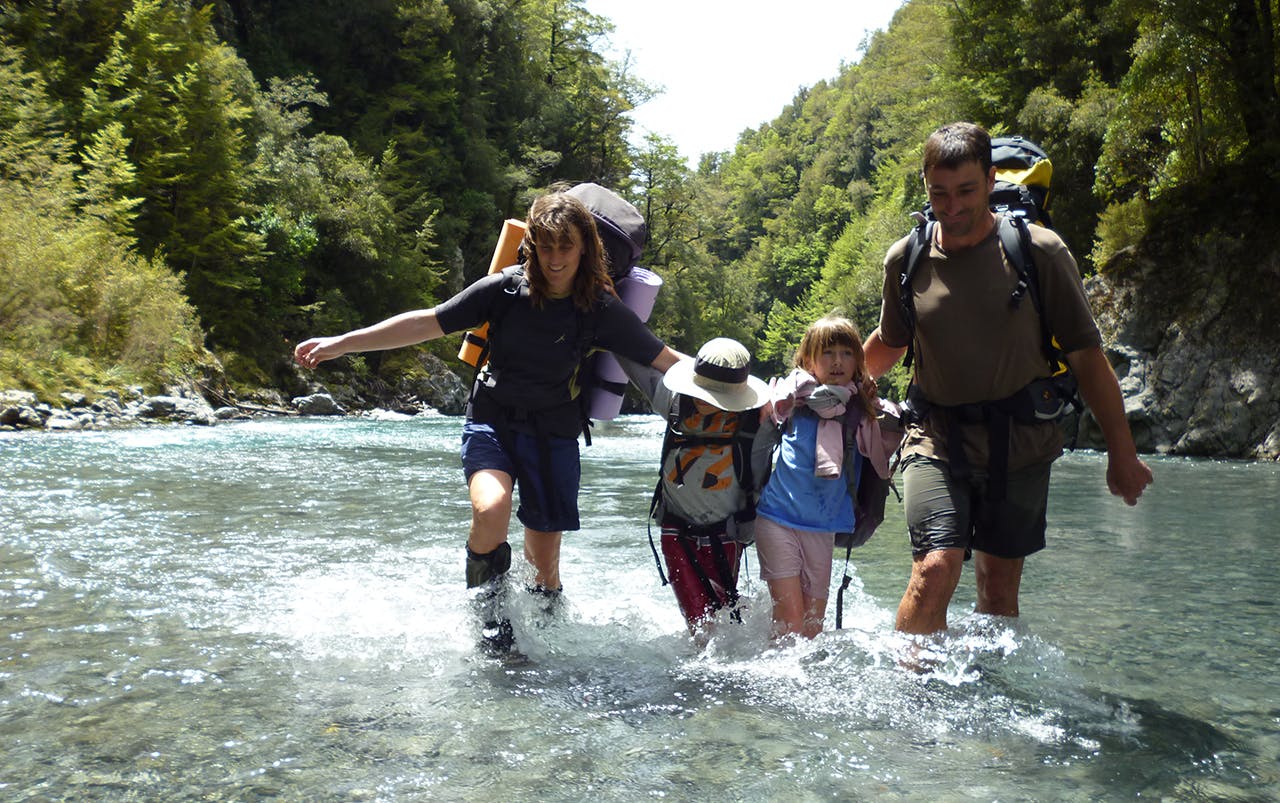Learning a few bush skills will add to your children’s enjoyment of tramping as well as giving them confidence, writes Margaret Carpenter
Using bush skills is all part of the ‘tramping game’ for kids; it’s something they want to take an active role in. So teach them how to do the fun stuff safely and effectively. The focus is not on essential tramping skills, but on skills that children will enjoy learning and can be taught from a young age.
1. Enjoyment The first thing they need to learn about tramping is that it is enjoyable. This is taught by taking them on trips which involve sunshine, playtime, rivers or lakes to swim in, frequent snack stops, an easy pace, and early arrival at campsites. Help them avoid sunburn, insect bites and cold. Once they have a positive experience of the outdoors, they can be introduced to occasional rainy days and longer walks.
2. River crossing Children delight in water and will enjoy river trips in summer. Teach them to find a good spot to cross (shallow, not too fast and with good run out) and how to link up with parents so no one falls in. Cold conditions make river crossing extra tricky: cold wet clothes will chill kids quickly.
3. Safety on the track The number one rule of tramping, keep together, is all the more important for children. Teach them not to run ahead and to stop and wait at track junctions or stream crossings or when they’re not sure which way to go. Train them to follow the orange triangles. They shouldn’t enter water without permission and if lost, know to stay put and make some noise.
4. Campfires Where permitted, campfires are a great addition to campsite fun. Once children have learnt that firewood needs to be dead and dry, junior pyromaniacs will enthusiastically gather small pieces of wood and delight in keeping the fire well fed. Soon they’ll want to light the fire themselves, but they’ll need a few pointers from you. Carry some newspaper or candles, or find dry beech leaves to provide a lively start, then add small twigs and larger sticks. Find plenty of good dry wood to set them up for success.
5. Pitching a tent Children seem to love tents and, once they have seen the magic of you pitching the tent a couple of times, they will want to help. If your tent requires particular poles to go in particular sleeves, this will need to be taught. The rest they will learn through imitation. It’s a lovely moment when you pull a tent out of your pack and your child spontaneously begins assembling the poles.
6. Edible plants Snowberries and snow totara berries are plentiful in season and easy for little hands to pick. Young supplejack shoots are tasty – if you can get to them before the possums. Of course, children should never eat anything without checking with you first.
7. Organising their stuff Children will soon learn what they need to take and, from about five years of age, they can start carrying their own clothes, but you will need to double check they have packed everything they need.
8. Campfire cooking Cooking over a fire is a novelty, especially when children get to do it themselves. Two favourites of our family are sausage-on-a-stick (preferably pre-cooked) and damper-on-a-stick (make a dough with self-raising flour, milk powder and water, wind a piece around the end of a stick to form a cylinder, toast over fire until golden brown, serve with butter and jam).
9. Map reading At the start of your tramp, and at intervals during it, show children the route on the map and describe what they will see and experience This will both prepare them for the walk ahead and get them accustomed to interpreting maps. Don’t push it – just keep the maps handy until they are older.
10. Safe use of a pocket knife Some children love pocket knives and will happily spend time at camp whittling pieces of wood. As long as they are taught to use a knife safely (cutting away from themselves), and the knife is not too sharp, they are unlikely to do much damage







